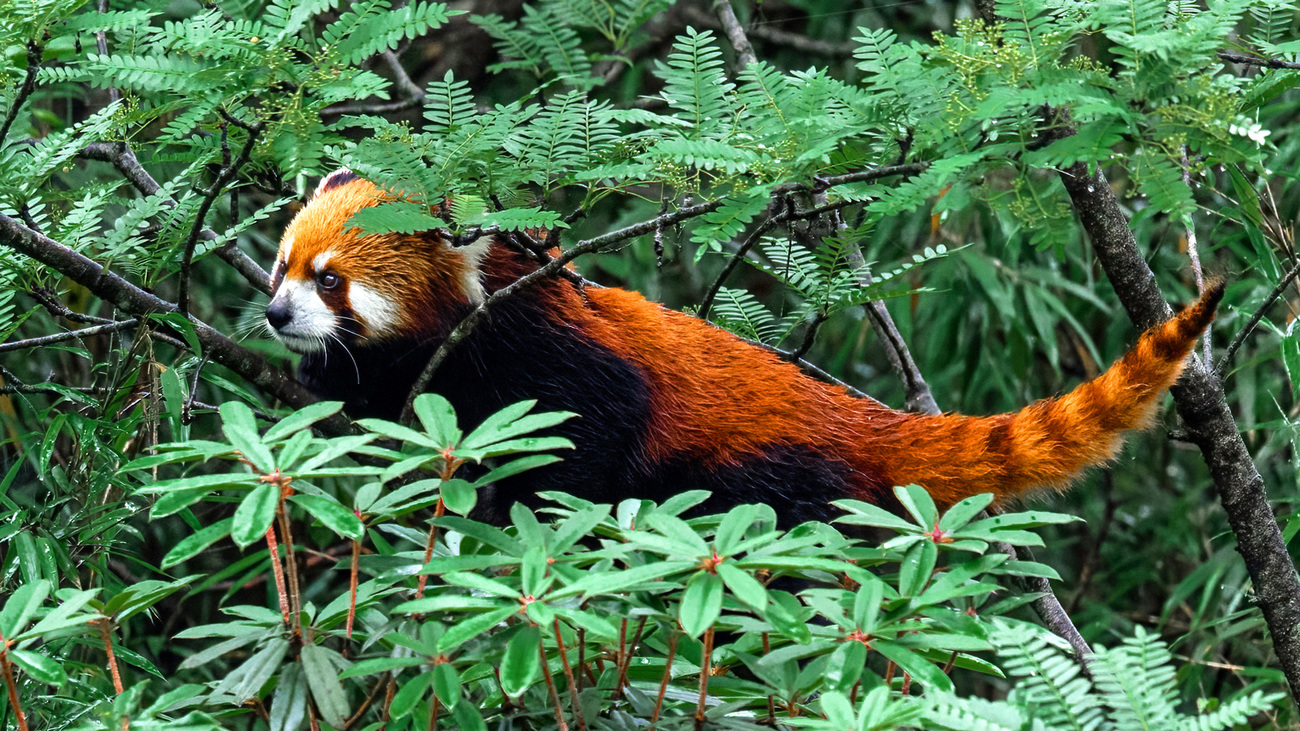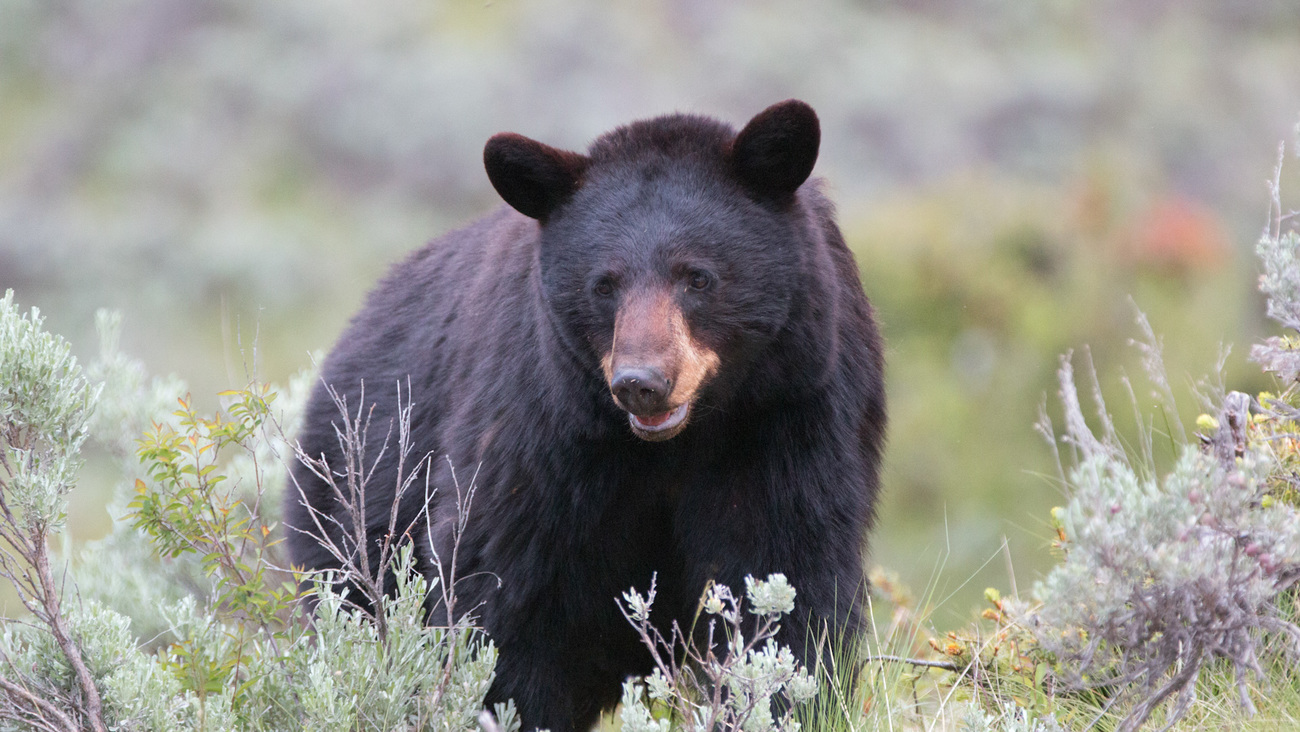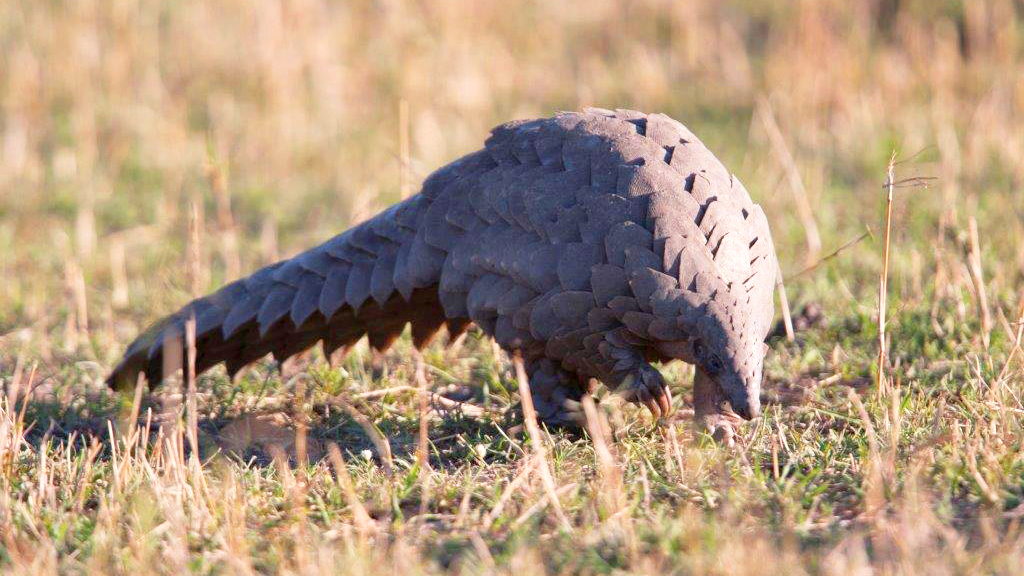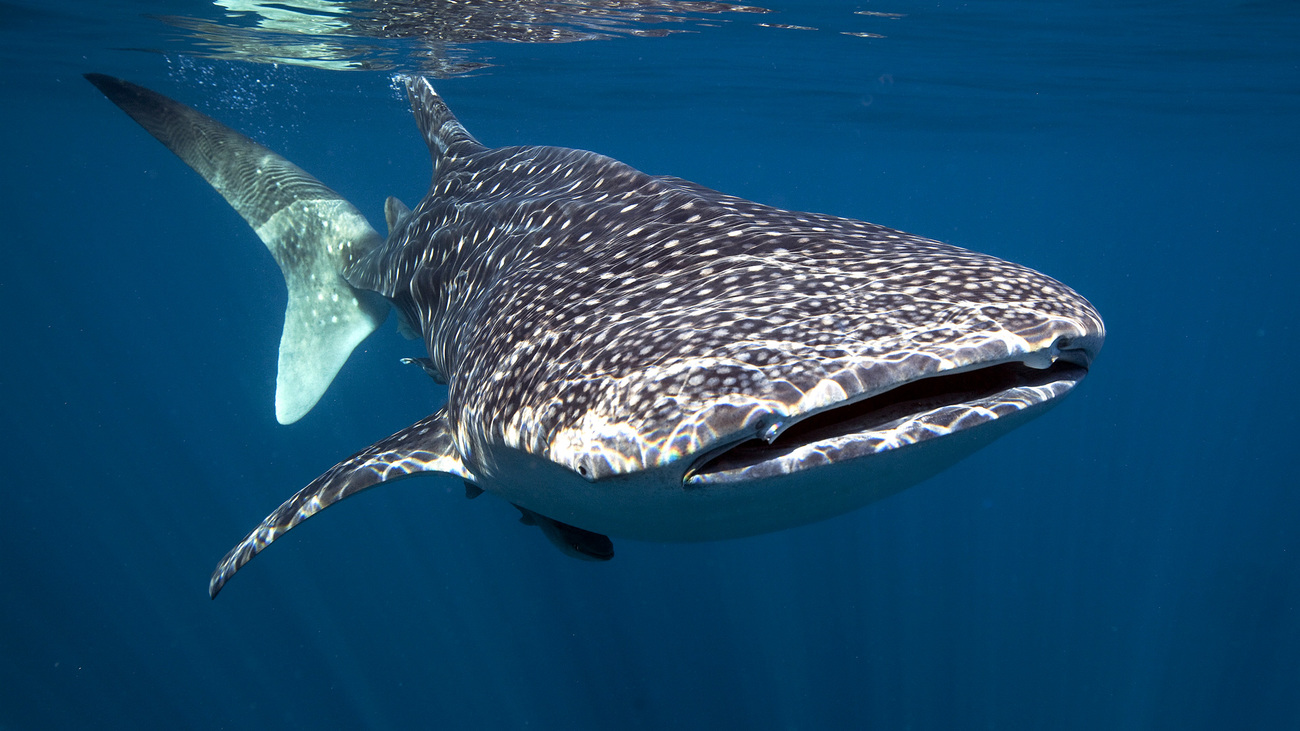Policy Conventions & Agreements - Global
Protection for wildlife & habitats is preserved in global agreementsInternational agreements between governments play a critical role in affecting change for the planet and its species. By participating in such meetings, IFAW seeks to ensure animals have a voice. One such important meeting is CITES, where we work with governments and other NGOs to help form recommendations, provide data, and lobby for increased protections for species at risk.
On 3 March 1973, CITES was signed, becoming the only treaty to ensure that international trade in plants and animals does not threaten these species’ survival in the wild. To commemorate its signing, 3 March has been proclaimed World Wildlife Day. At 50 years old, CITES remains one of the most important global treaties to protect animals.

Let’s explore what CITES is and how it protects biodiversity.
What is CITES?
CITES stands for the Convention on International Trade in Endangered Species of Wild Fauna and Flora.
CITES is an international agreement between national governments around the globe to regulate the trade in wild animals and plants to ensure it doesn’t threaten the survival of these species. When governments voluntarily join the agreement, they become legally bound to create national laws that ensure wildlife trade is legal, sustainable, and traceable.
The goal of CITES is to protect species from extinction by setting rules for their international trade. Such trade can range from the capture and sale of live animals and plants to the commercial markets of their products, like leather goods or derived medicines.
The Convention was created in response to growing concerns about the impact of international trade on wildlife populations. First drafted at a meeting of the International Union for Conservation of Nature (IUCN) in 1963, CITES first entered into force on 1 July 1975.
Wildlife trade can threaten the survival of species. Over-exploitation, whether for pets, food, leather, ornaments, or traditional medicine, has driven many species to the brink of extinction.
By regulating and monitoring this trade, CITES aims to ensure that it remains sustainable and does not further endanger species in the wild. It also helps to combat illegal wildlife trade––one of the largest and most profitable criminal activities globally.
As of February 2025, there are 185 parties to CITES, including countries and regional organisations, making it one of the most widely accepted international agreements on wildlife conservation.
What does CITES do?
CITES guides nations around the world on how to protect threatened species by regulating and monitoring their trade. It establishes a framework for countries to cooperate with each other to ensure that plant and animal species aren’t depleted by international demand.
Without CITES, wildlife being imported and exported across borders would be subjected to inconsistent protections. By establishing an international agreement and guidance, law enforcement officials and courts are empowered to identify and enforce species protections. This helps ensure that animal and plant populations are traded sustainably, supporting communities that rely on them now and into the future.
How many species does CITES protect?
As of 2024, CITES protects more than 40,900 animal and plant species, subspecies, and populations around the world. This includes 6,610 species of animals and 34,310 species of plants.
Across 3 appendices, CITES protects:
What is a CITES appendix?
CITES consists of three appendices or lists that categorise each species based on the level of protection they need. Each appendix includes different species, with specific rules on how they can be traded internationally based on their risk of extinction and the threat that international trade poses to that specific species.
Appendix I includes only about 3% of all species covered by CITES and offers the highest level of protection to species close to extinction. Most species included in CITES are listed under Appendix II. Let’s take a closer look at each appendix.
Appendix I
The most endangered species among CITES-listed animals and plants are listed in Appendix I. These species are at the highest risk of extinction and are severely threatened by international trade.
International trade in specimens of these species is generally prohibited, except in exceptional circumstances, like for scientific research. Permits are required from both the exporting and importing countries.
Examples of species included in Appendix I are tigers, red pandas, some populations of African savannah elephants, and certain types of orchids.
Appendix II
This category includes plants and animals that may not yet face the highest threat of extinction, but are likely to if trade is not regulated. This appendix also includes species that look similar to other threatened species on the CITES Appendices and need monitoring to avoid illegal trade, as they may be misidentified by traders and buyers, or used as a cover for trade in species that would not otherwise be permitted.
International trade is permitted for plants and animals included in Appendix II, but it is monitored and limited. Trade of any species in Appendix II requires a CITES export permit or re-export certificate granted by the Management Authority of the exporting country before the trade occurs. Some countries also require import permits for Appendix II species.
Most of the species covered by CITES are included in Appendix II (97%). This includes great white sharks, American black bears, and mahogany trees.

Appendix III
This covers species that have been included in CITES at the request of a specific country that already regulates trade in that species and needs the cooperation of other countries to prevent illegal or unsustainable exploitation.
International trade of species in Appendix III is permitted but requires a certificate of origin from the exporting country and, in some cases, an export permit. Only 1% of all species covered by CITES are included in this category.
Examples of species in this appendix include walruses, requested by Canada, and the African civet, requested by Ghana.
What species are covered under CITES?
For a better understanding of CITES and how it functions to protect species, let’s take a closer look at some of the animals that fall under the convention. The full list can be found on CITES.org.
Pangolins

As one of the most heavily trafficked mammals on Earth, all eight species of pangolin are listed under CITES Appendix I. Since 2014, every pangolin species has received the highest level of protection due to significant concerns about the levels of pangolin trade, as more than 20 tonnes of pangolins and their parts were traded every year from 2010 to 2015.
Pangolins continue to be illegally captured across their range in Africa and Asia and traded illegally for their meat and scales, which are used in some forms of traditional medicine.
Glass frogs
Glass frogs, the strikingly translucent amphibians of the family Centrolenidae, were added to CITES Appendix II just recently, in 2022. Found in forests of Central and South America, glass frogs’ appearance has made them a popular exotic pet in Europe and the US, which has spurred significant international trade. Already, glass frogs face threats from habitat loss and climate change, so protection from trade is crucial to ensuring their survival in the wild.
Elephants
African and Asian elephants are covered by CITES. African forest elephants and African savannah elephants are included together in Appendix I, except for some populations in southern Africa, which are listed in Appendix II. Asian elephants are listed in Appendix I.
Elephants are targeted for their ivory tusks, which have been used to make piano keys, jewellery, and art for centuries. Poaching for ivory and the illegal trade it supports has decimated many elephant populations around the world, who also face threats from habitat loss and human-wildlife conflict.
Jaguars
Jaguars receive the highest level of protections under Appendix I. These large cats were targeted for their fur in the 1960s and 1970s, leaving some populations close to extinction.
They were first covered by CITES in 1975, which helped their populations recover from illegal trade. Unfortunately, they are once again threatened—this time by deforestation and habitat loss, as well as ongoing trade in their parts.
Giraffes
Giraffes are listed in Appendix II of CITES, as they could be put at risk of extinction due to unregulated trade.
These African mammals are threatened by illegal hunting for their meat and body parts. The international trade in giraffe products, including bones used for knife handles and hides for leather goods, may have contributed to a decline in some populations and needs to be closely monitored to ensure it does not pose a further threat to giraffes.
Dugongs

Dugongs have been listed as a vulnerable species since the 1980s, and they are listed in Appendix I of CITES, receiving the highest protections possible.
These giant marine mammals live in warm, coastal waters and are hunted for their meat, oil, and body parts. Thanks to CITES, international trade in dugongs or their parts is prohibited, which helps dugong populations recover and safeguards them against further decline.
Polar bears
When CITES was first adopted, polar bears were among the first species to be listed under Appendix II of the convention, meaning trade must be regulated to ensure it does not threaten their survival. The loss of Arctic sea ice due to climate change is rapidly reducing and fragmenting polar bear habitat. In the face of an extremely uncertain future, it is important international trade in their body parts does not threaten the survival of the species. Currently, the controlled trade of polar bear products, such as skins and trophies, is legal, but only if it does not negatively impact their wild populations.
Legal versus illegal trade in wildlife
CITES uses a system of permits and certificates to regulate international trade in animals and plants. Each year, more than one million permits and certificates track and monitor trade worth billions of dollars. Legal trade includes products made from wood or leather, medicines and cosmetics made from plants, and the sale of live animals. When species covered by CITES are traded outside of this monitoring and permitting system, it is considered illegal. Countries that have agreed to abide by the CITES agreement are expected to penalise any illegal trade and confiscate the live animals and wildlife products.
Illegal trade
Unfortunately, illegal trade in wildlife products (wildlife trafficking), is often pursued by organised crime groups seeking to profit from the black-market. Efforts to conserve and protect vulnerable plants and animals are undermined by criminal activity.
International agreements like CITES are important for addressing wildlife trafficking, because without cooperation across borders, even the strongest national protections for a species can be crippled by demand in other countries. When nations collaborate in conservation efforts, wildlife crimes can be caught and stopped at any point in the trade, from collection to border crossings to markets.
Online trade
The online wildlife trade has become an increasing issue for conservationists in the last few decades. This global marketplace allows sellers to reach a vast audience across geographical borders anonymously, which makes enforcement challenging.
This trade includes live animals, like reptiles and birds, for the exotic pet trade, as well as animal parts, such as elephant ivory, rhino horns, and pangolin scales. The rapid growth of the online wildlife trade can drive poaching and illegal harvesting to meet demand.
The sale of tiger cubs and rare tortoises has been found on social media, and online marketplaces have facilitated the illegal trade of rare orchids and cacti.
Who is affected?
Some of the animals most affected by illegal wildlife trafficking include elephants, targeted for their ivory tusks; rhinos, poached for their horns; and pangolins, which are heavily trafficked for their scales and meat. Tigers are also at high risk, with their skins, bones, and other parts sold for traditional medicine and luxury goods. Amphibians, such as glass frogs and poison dart frogs, are also heavily trafficked—in fact, they are the most threatened type of vertebrate (animals with backbones) in illegal trade. You might be surprised to learn that sharks, rays, and chimaeras are the second-most threatened vertebrate group.
Additionally, various species of parrots, reptiles, and other animals are captured and sold as exotic pets. This illicit trade not only threatens these species with extinction but also disrupts ecosystems and fuels global criminal networks.
How often does CITES meet?

The CITES Conference of the Parties (CoP) is held every three years but has many crucial committee and working group meetings that take place in between CoPs to ensure work agreed upon at the CoP is undertaken and new recommendations are prepared for future CoPs.
These meetings include the CITES Standing Committee, which is responsible for implementing CITES rules on international wildlife trade, including holding governments accountable when they are not implementing CITES correctly.
The most recent CoP took place in Panama City, Panama, in November 2022, during which several significant decisions were made to strengthen wildlife protections. This included an addition or change in status for over 500 species, including 100 shark and ray species and 50 turtle and tortoise species.
CoP19 upheld the existing ban on international commercial trade in ivory. In addition, parties agreed to work together to support Mexico in fighting to save the vaquita porpoise by providing financial and logistical support for fishers to use vaquita-friendly fishing gear.
Over 100 species of glass frogs, sought after in the exotic pet trade, were added to Appendix II, which requires controlled trade. Additionally, the conference expanded protections for African elephants by restricting the export of live elephants to non-range countries and moved several species of songbirds and tropical tree species to higher protection levels.
The 20th CITES CoP will take place in Samarkand, Uzbekistan, from 24 November to 5 December 2025.
Learn more about conservation efforts protecting threatened species
The fight to protect threatened species is an ongoing, multifaceted effort. Complicated problems like these require innovative, bold solutions.
In addition to establishing legal protections through CITES, it is important for these laws to be properly enforced to preserve these threatened species. IFAW, as a conservation and rescue organisation, offers support to countries to help implement these protections. For instance, we train law enforcement professionals in the safe handling of live animals seized in trade, and have held several shark fin identification workshops in Latin America.
In 2024, IFAW organized shark fin identification workshops in Ecuador, Panama, and Colombia. Working with officials from various law enforcement entities, we’ve equipped them with the knowledge, competence, and skills necessary to tackle illegal trade in CITES-listed sharks.
IFAW has also conducted several trainings on combatting illegal shark trade in the Middle East and North Africa (MENA) region. In addition, IFAW has conducted more than 75 training workshops on CITES implementation across the MENA region
‘Beyond advocacy, it is equally important to implement newly adopted regulations,’ says Barbara Slee, Senior Programme Manager of International Policy at IFAW. ‘IFAW is ready to support countries with that process. We are training so many people in countries that don’t have the financial means, and they genuinely appreciate our support in the implementation. This cements the COP cycle.’
Learn more about how IFAW is advocating for animals around the world >>
Related content
Every problem has a solution, every solution needs support.
The problems we face are urgent, complicated, and resistant to change. Real solutions demand creativity, hard work and involvement from people like you.